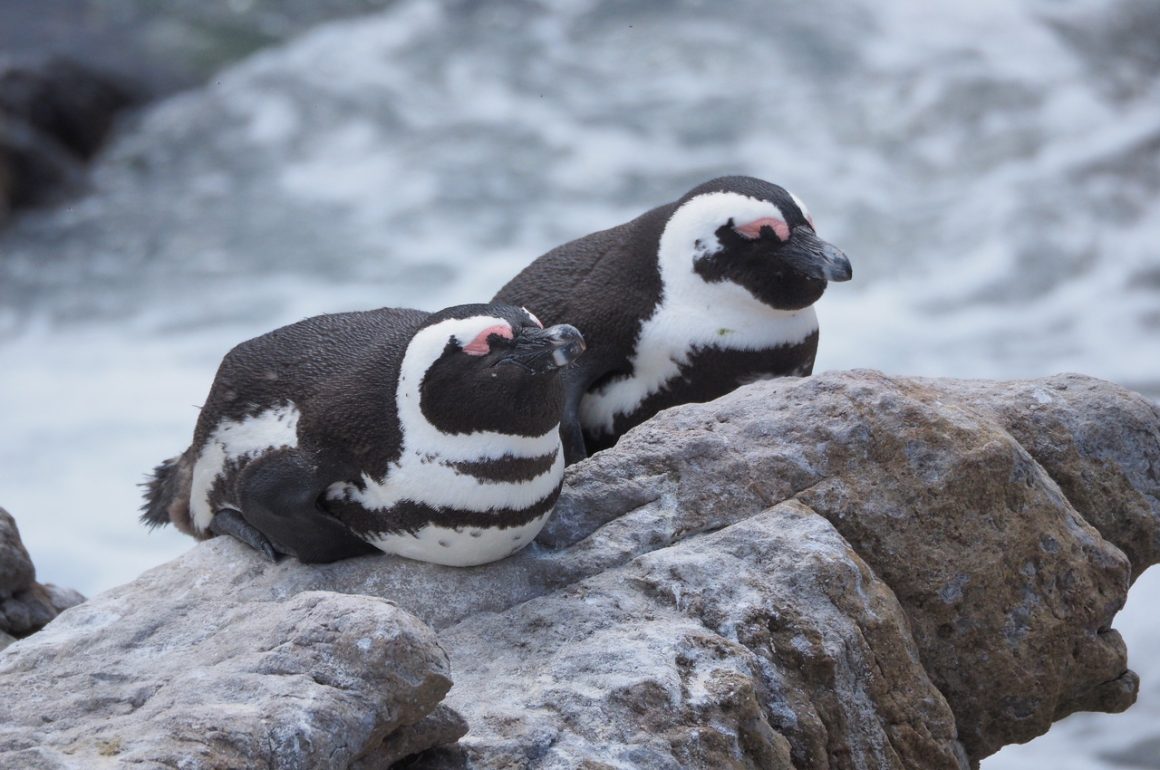
There are 19 species of penguins in the world, of which only one, appropriately called the African Penguin, breeds in Africa. It’s a Southern African endemic. When I first encountered these birds, they were still known as Jackass Penguins, a name derived from their call, which is aptly described in Robert’s Birds of South Africa as a “loud, donkey-like braying”. The birds I saw were at the Boulder colony within Table Mountain National Park, not far from Cape Town. This is a guaranteed site for this species, for these birds breed throughout the year. Intriguingly, the first pioneering pair nested at Boulders in the early 1980s; the colony peaked at 3,900 birds in 2005.
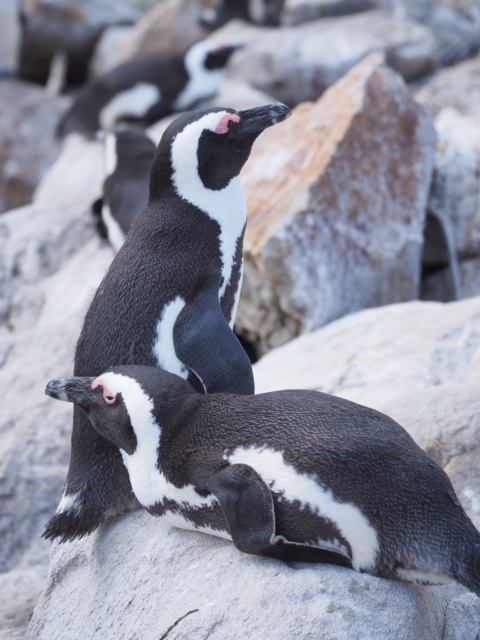
Sadly, the growth hasn’t continued, for the African Penguin is a bird in deep trouble. According to the South African National Parks Website, “African Penguins were reclassified on 26 May 2010 from a Vulnerable to now Endangered status. In 1956 when the first full census was conducted on the African Penguin, there were approximately 150,000 breeding pairs counted. In 2009 there were only 26,000 breeding pairs left in the world. These numbers indicate a loss of more than 80% of breeding pairs in just over 50 years.” This information is now seriously out of date, for the African Penguin’s status has recently been updated again, but this time to Critical.
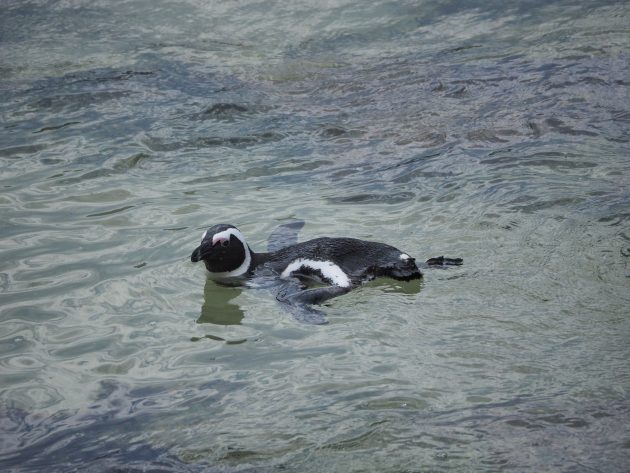
The latest Bulletin of the African Bird Club (June 2025), reveals that the population had fallen to 9,900 pairs in 2023, while the Western Cape population is declining at a rate of around 1.5% a year. Overall, the global population has more than halved in the last decade, and has fallen below 10,000 pairs for the first time. Namibia has lost c3,600 pairs in the last five years, and only had 1,200 pairs in 2023. “The decline has been attributed to food shortages resulting from shifts in the distribution of prey species, competition with commercial fisheries and environmental fluctuations.” I note the theory that the penguins compete with commercial fisheries for food, as it’s very much a one-way competition, with only one winner. The penguins don’t stand a chance.
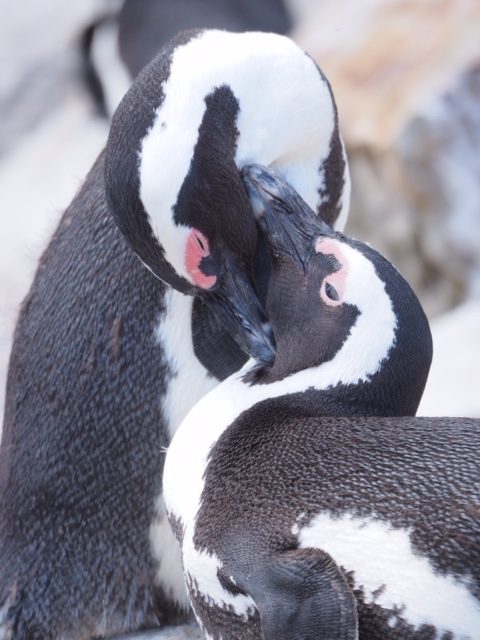
According to South African ornithologist Prof. Peter Ryan, “the population numbered in the millions at the start of the twentieth century, but the collection of more than 100,000 eggs each year reduced it to fewer than 150,000 pairs by the 1950s. Subsequent protection hasn’t improved the species’ fate. Today it suffers from oiling and food shortages following fishery collapses in Namibia and a shift in fish stocks off South Africa.”
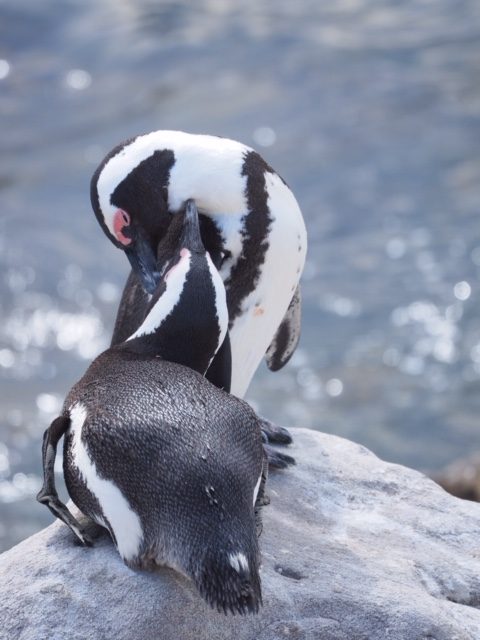
Boulders Beach is attractive to the penguins as it’s predator free, (human disturbance keeps the predators away), while there are good feeding grounds close by. This is largely due to the fact that there’s no commercial fishing in the adjacent bay. Incidentally, the colony here was deeply unpopular at first, with local residents complaining about the noise of the penguins, the smell of their guano, and the increasing number of tourists the birds attracted. According to Ryan, “Ultimately the only solution was improved management of the colony to limit its impact on adjacent homeowners.”
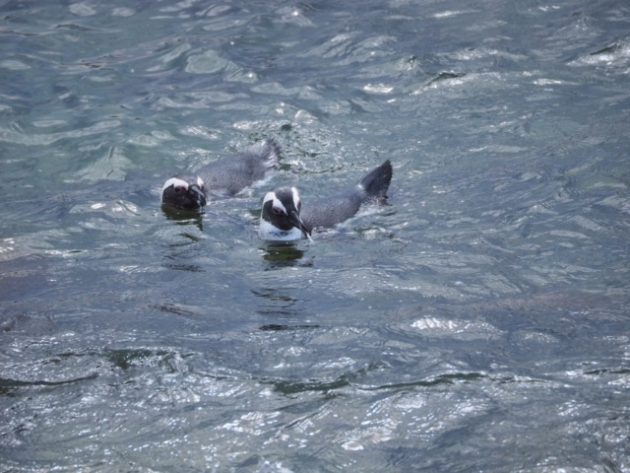
Boulders has three pristine beaches, together with a penguin-viewing area. Visitors are warned, however, that though the penguins “may look cute and cuddly, their beaks are as sharp as razors and if they feel threatened they have no qualms about nipping the odd finger or nose.” You have been warned.
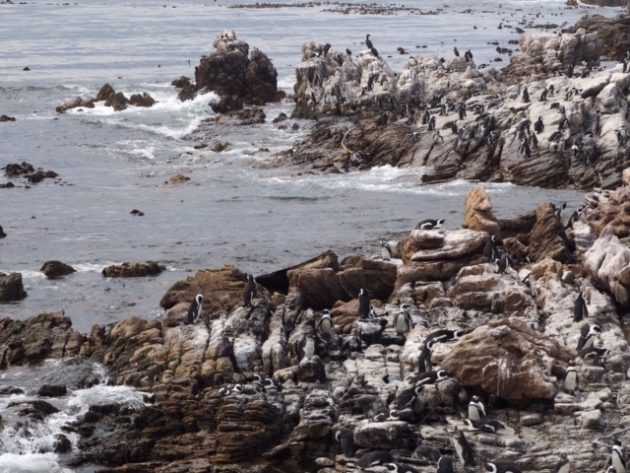
Stony Point, Betty’s Bay, one of two mainland penguin colonies in South Africa
Boulder is one of two mainland sites for African Penguins. The second site is at Stony Point, Betty’s Bay, which is where my photographs were taken. There are fewer penguins here than at Boulder, but on my visit I saw several hundred, along with four species of cormorants (Bank, Crowned, Cape and White-breasted). Of these, Bank were the most numerous, while the Crowned were the hardest to find. I also saw several Black Oystercatchers, a bird that has increased notably in South Africa in recent years. I remember struggling to see this species 40 years ago, but today it’s common along the coast of South Africa. Apparently the increase is due to two factors: better coastal protection and the invasion of the alien Mediterranean mussel Mytilus galloprovincialis which has improved the birds’ food supply.
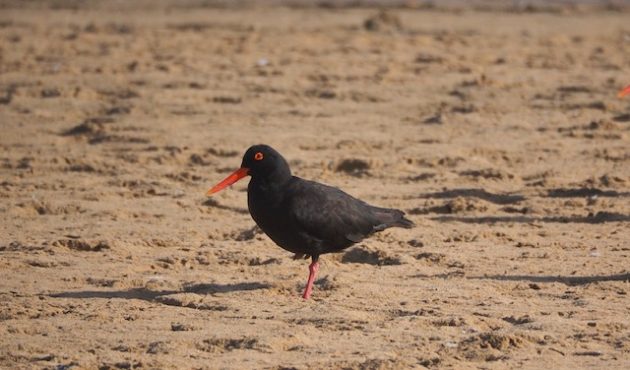
Black Oystercatcher – a bird on the rise
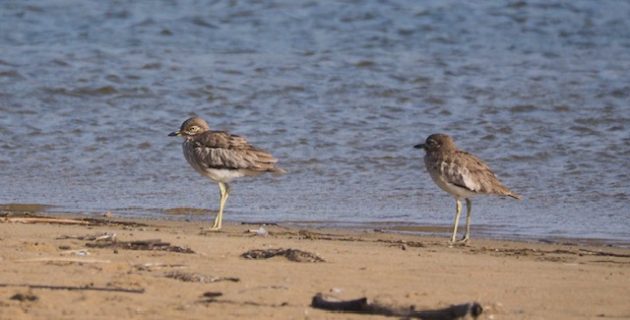
Water Thicknees, a common shore bird in South Africa
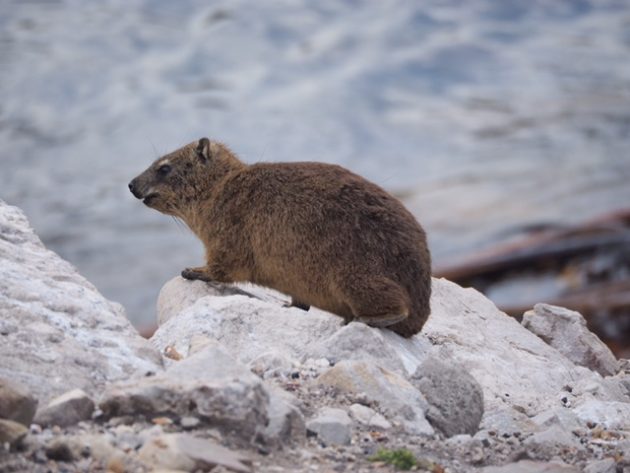
The local Rock Hyraxes are tame and approachable
It may seem an unlikely place to look for mammals, but Rock Hyraxes can be found close to the penguin colony. They are used to seeing people, which they ignore completely.

You have to pay a modest permit fee of 40 rands (2.2US$) to use the boardwalk to Stormy Point to see the penguins, while for those too mean to pay, it’s easy to see the birds without spending money, as the penguins don’t stay in the protected zone. However, the photography is certainly easier, and the birds closer, within the zone. The colony is overseen and protected by CapeNature. Betty’s Bay is an easy drive west of Hermanus, a town famous for its whale watching. It’s one of the best places to see Southern Right Whales, which congregate offshore during the southern spring.
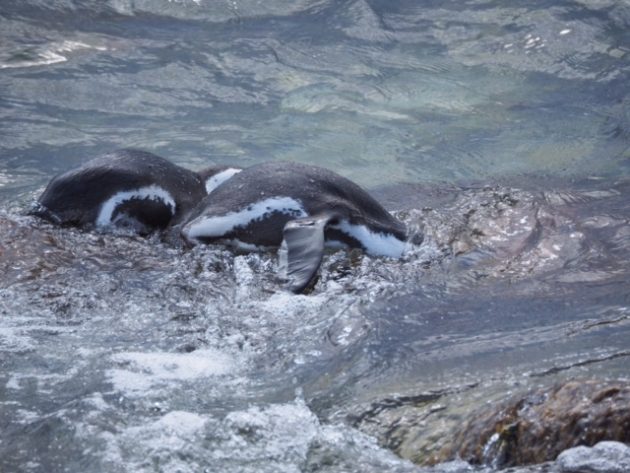
I’ve been lucky enough to have seen half of the world’s penguin species. They are all fascinating, entertaining birds, and none more so than the Africans. For anyone visiting Cape Town with an interest in birds, they are a must-see species, while the alarming speed of this bird’s decline suggests that you should make the effort to see them while you still can. Fortunately, the African is the only penguin species that currently has a Critical status.
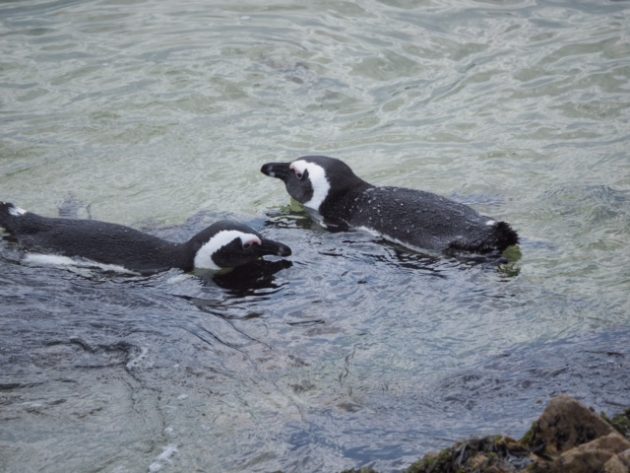



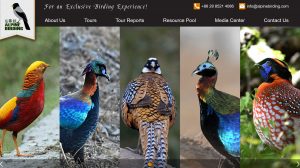

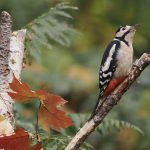
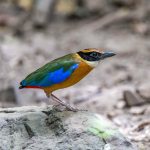
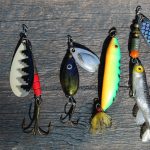
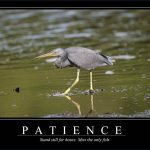
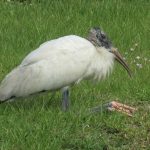
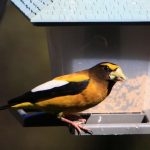
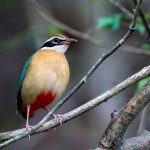
Love this! I was able to see the colony at Boulders Beach last month, when the chicks were hatching. I loved the constellations of speckles on the tummies!
Check out the BirdLife South Africa website. There’s been some conservation success with the penguins.